|
BULB LOG 02 --- 9th January 2008
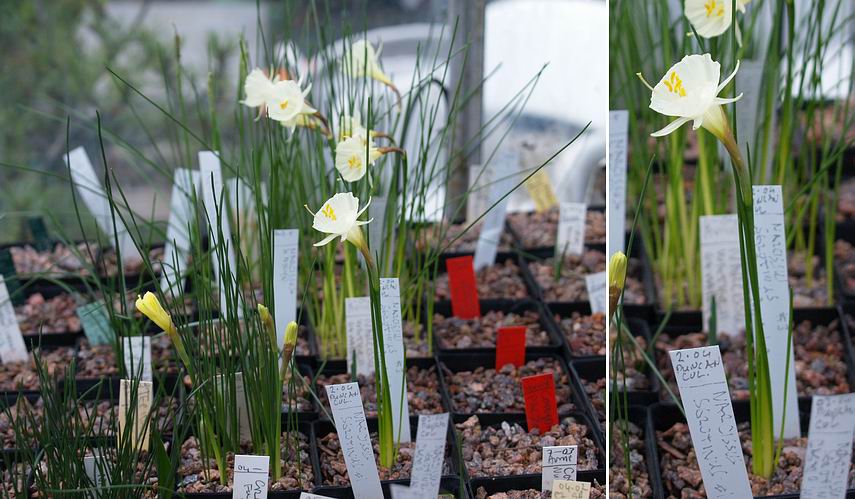
Narcissus not serotinus
Do you remember in a previous bulb log I proudly announced that I had for the very first time a flower bud on a Narcissus serotinus seedling? Well bulb log readers cannot be fooled that easily and it was pointed out to me that it did not look like N. serotinus in the bud which I quickly agreed with. Now I can reveal the true identity as the flower is open. It is as I expected a stray seed from one of my many pots of Narcissus romieuxii which must have fallen onto the pot and here it is in flower.
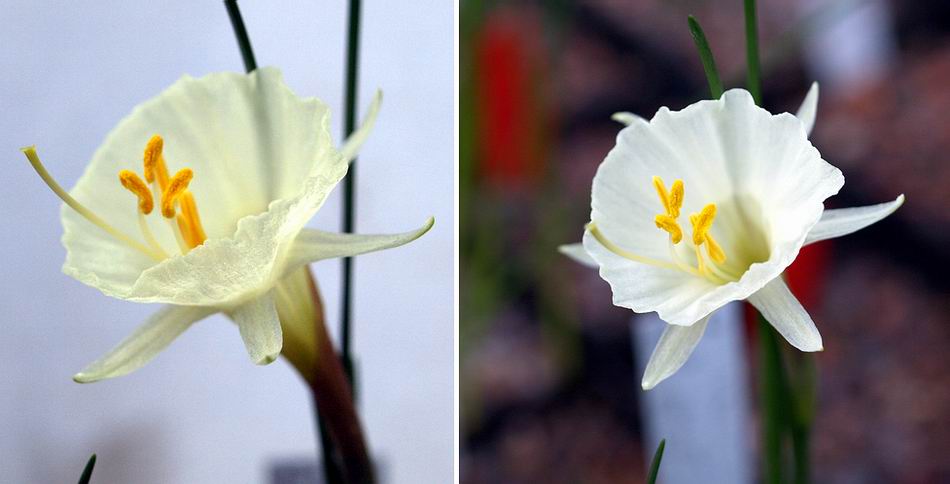
Narcissus romieuxii
The picture on the left is in ambient light and the right hand one was taken with some flash. It is a pretty little upward facing N. romieuxii but I have to admit to my disappointment that I am still waiting to flower Narcissus serotinus - hopefully some of the N. serotinus seedlings in the other pots will flower eventually.
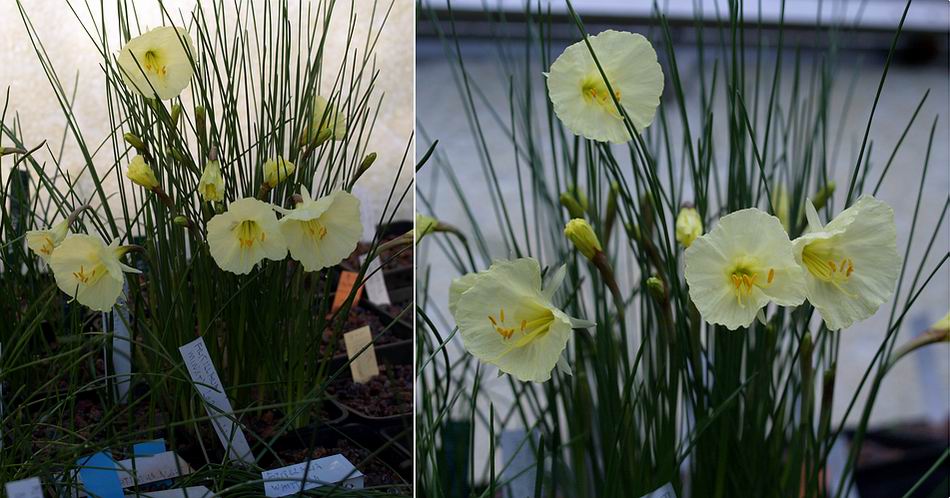
Narcissus romieuxii 'Craigton Clumper'
Narcissus romieuxii 'Craigton Clumper' is a good vigorous selection I raised some years ago. There is much discussion about naming too many plants in the forum just now especially related to Galanthus so I will restate my thoughts. I only select out a plant if there is good reason and with Narcissus romieuxii the reason may not be that it is very different to look at - it is often because it is a very good grower, flowers freely and bulks up well. After many years of vegetative increase old clones often start to get weak and diseased so introducing young healthy stock is good. I now always name a plant before I distribute it so it cannot be confused and can also be traced back to its origin. In the long term only the very best plants will persist and become widely grown and many named forms will simply disappear. So while I do have a lot of sympathy for those who think there are simply too many snow drops being named, time will sort them out and only a handful of the hundreds of new ones will persist. The oth
er problem is that many names are being applied to the same plants and if those plants had been named in the first place that quandary would not be so common.

Narcissus 'Cedric Morris'
One very good and distinct narcissus that has stood the test of time and is well deserving of its name is the lovely Narcissus 'Cedric Morris'. We have it both in pots under glass and in the garden where it flowers well but always gets a battering from the winter weather.
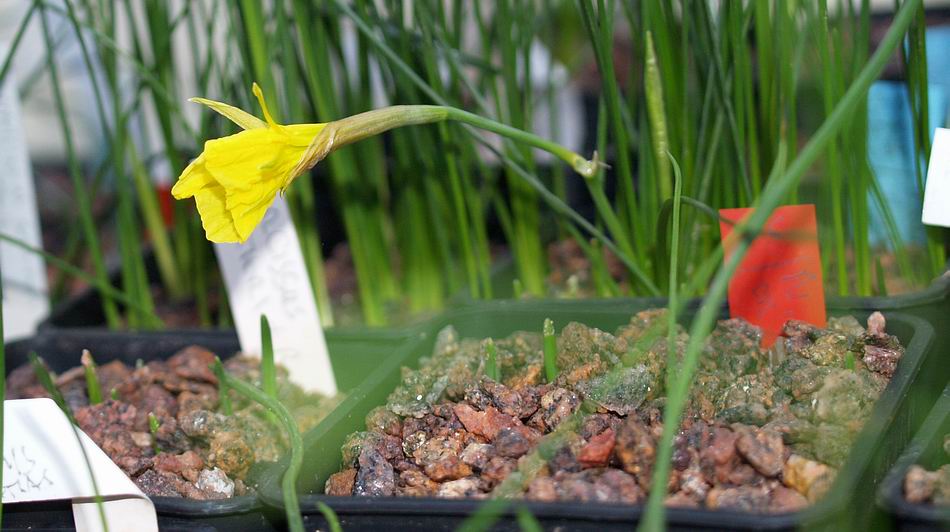
Narcissus bulbocodium
The first Narcissus bulbocodium flower is just opening, seen here through the green haze of a leaf crossing the camera lens. Can you see the stem is half chewed through at the base? This was a slug some weeks ago but the flower is continuing to develop despite the damage.

Narcissus with ripe pollen and receptive stigma
If you want to get seed it is important to pollinate your flowers, especially at this time of year when no insects are about to help out. This picture shows that the pollen is ripe and flowing and the stigma is sticky and receptive, just waiting to receive some pollen.

Crocus laevigatus
Crocus laevigatus is an amazing plant that will produce flowers throughout the autumn and winter and even into spring and again, if you transfer the pollen from anther to stigma, you stand a chance of getting seed.

Crocus seed germinating
Most bulb seeds start to germinate at the time the parent bulbs are starting to appear above ground and here is a crocus seed just germinating. Look carefully and you can see the second 'leaf' that remains in the seed, the leaf rising up, the stem pushing down and the root towards the bottom. The root is of a contractile nature which helps pull the corm down into the soil - the corm will will form just to the left of where the root appears.
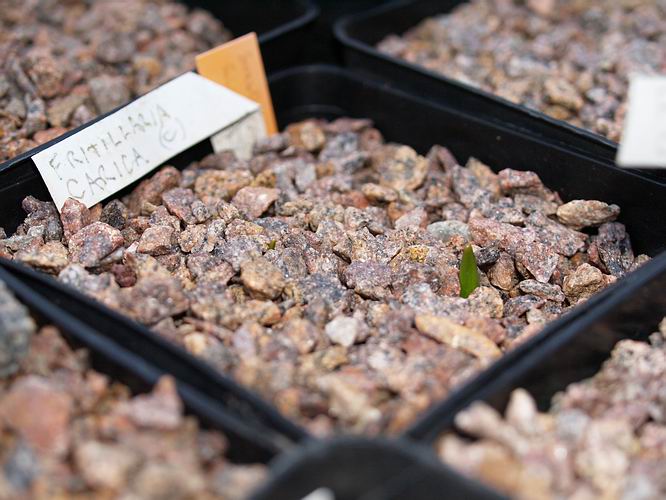
Fritillaria carica bud showing
I am also seeing the first of the Fritillaria shoots emerging through the gravel, Fritillaria carica is among the early risers.
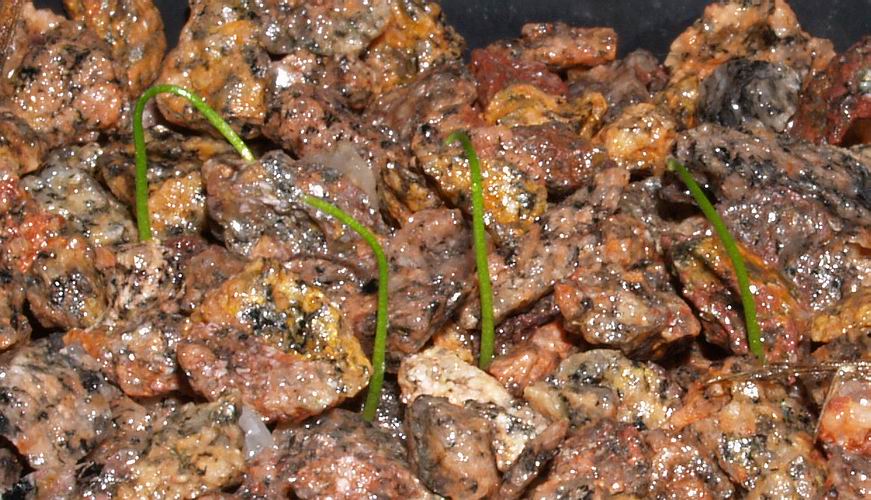
Fritillaria seedlings
Also right on cue the first Fritillaria seedlings are germinating, these are the first seed leaves of F. tuntasia.

Fritillaria stenanthera seedling germinating
I am really enjoying my new digital SLR with the macro lens it means I can get very close pictures like these of the seeds germinating. Not that I could not get similar pictures with my other digital cameras but I have complete control with the SLR. Again if you look closely you can see where the stem changes angle about one third of the way back from the left, there is also a slight colour difference, this is where the bulb will form. The green tip is the growing point of the root that will continue to grow into the compost. I will try and follow these seedlings, photographing them through their first season of growth, to show how they develop: that is providing I can keep them alive - disturbing them on a regular basis is not ideal. I discovered this seedling the other day when I was watering and the flow of water washed several germinating seeds to the surface - I added another layer of gravel to cover the seeds. Seeds being washed to the surface like this must be a common occurrence in nature and that is
partly why Fritillaria seeds send down a root to anchor themselves and the bulb forms towards the bottom of the growth so the new bulb starts its life under ground and not on the surface.

Tecophilaea cyanocrocus shoots
The shoots of Tecophilaea cyanocrocus have been visible since at least November but now they are starting to elongate.
As I am going to be away for the best part of a month I watered all the bulbs this week when it was not freezing and that should provide sufficient moisture until I get back - as long as we do not get a very hot sunny spell. In January?
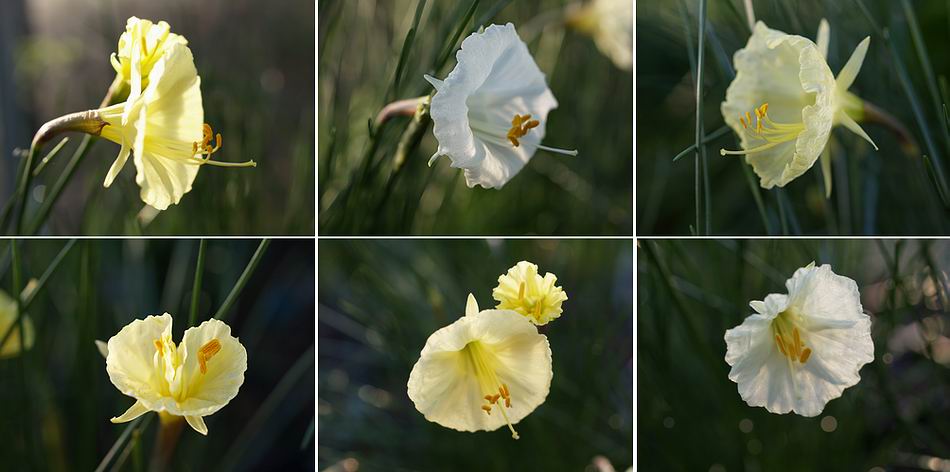
Narcissus montage
I will leave you with a montage of some Narcissus, the stars of the bulb house just now. I have written the next 5 bulb logs which will appear as per normal even though I will be out in New Zealand. They are not normal logs but I have adapted a series of articles on one of my favourite bulbs - guess what that is - which you can read. If you want a seasonal fix then check back the week over the last five years and see what was flowering in late January and early February previously and I will bring you up to date when I return in February.
I am looking forward to seeing many of you in New Zealand.
^ back to the top ^
|

